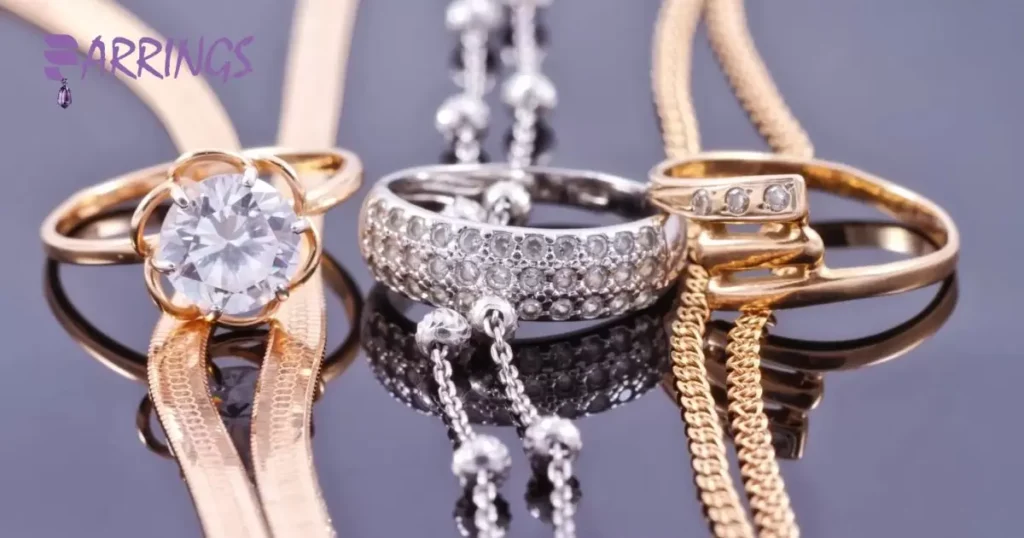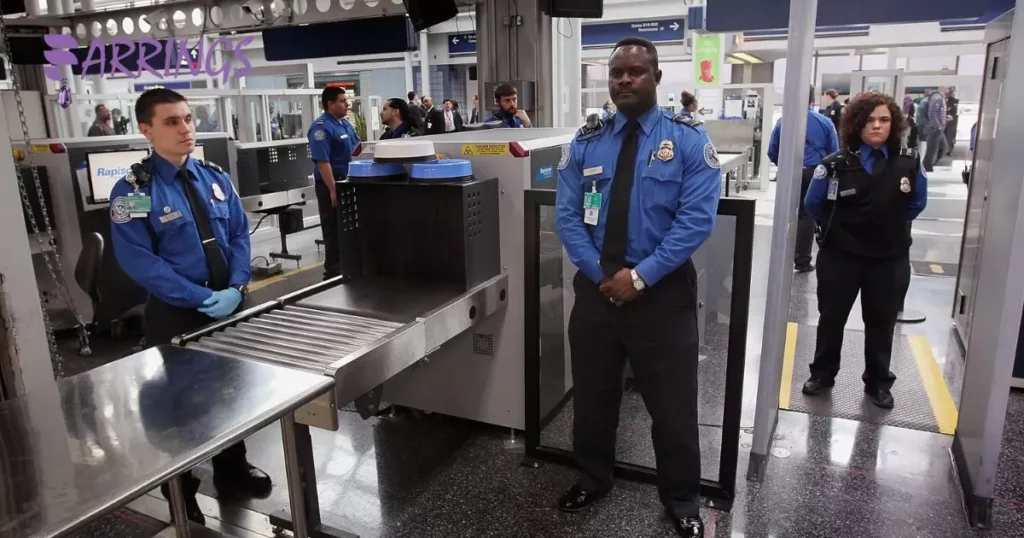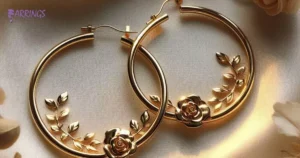Wearing earrings at airport security may trigger the metal detector. You might need to remove them and place them in a tray. Alternatively, if there’s a body scanner, you may be asked to keep them on. If the scanner detects them, a pat-down might follow. Follow instructions from staff for a smooth process.
Can you wear earrings through airport security? Earrings might trigger metal detectors, requiring removal and scanning. Some airports allow wearing them through body scanners. Cooperation with security instructions ensures a smooth process.
Navigating airport security with earrings means being prepared. Metal detectors may require removal for scanning, while body scanners could allow wearing them through. Cooperation with security ensures smooth travel, ensuring earrings in passport photos match your appearance accurately.
Key Takeaways
- Metal detectors detect earrings, possibly needing removal.
- Some airports permit wearing earrings through body scanners.
- Cooperation with security is essential for a smooth process.
- Following instructions minimizes inconvenience.
- Being prepared simplifies the experience.
Types of Earring Backs
Earrings come with various types of backs or closures, each offering different levels of security, comfort, and aesthetic appeal. Here are some common types of earring backs:
Butterfly Backs (Push Backs): These are the most common type of earring backs. They consist of a small metal piece that slides onto a post and has a butterfly-like flange that holds the earring in place against the earlobe.
Friction Backs: Similar to butterfly backs, friction backs use a small metal piece that slides onto the earring post. Instead of a butterfly-shaped flange, friction backs have a simple metal disk that provides pressure against the back of the earlobe to hold the earring in place.
Screw Backs: These backs feature a threaded post that screws into a matching threaded earring back. They offer a high level of security, making them popular for expensive or precious earrings.
Latch Backs (Hinged Backs): Latch backs have a hinged lever that opens and closes to secure the earring in place. They provide a secure closure while also being easy to put on and take off.
Fish Hook Wires: These are commonly used for dangle or drop earrings. They consist of a curved wire that passes through the earlobe and hangs freely, often with a decorative element at the front.
Lever Backs: Lever backs have a hinged lever that opens and closes to secure the earring. They offer a more decorative look compared to other types of backs and are often used for earrings with valuable gemstones or diamonds.
Clip-Ons: Clip-on earrings do not require pierced ears. Instead, they feature a hinged clip that attaches to the earlobe. They are a good option for people who don’t have pierced ears or prefer not to wear post earrings.
Threader Earrings: Threader earrings consist of a thin chain or wire that threads through the earlobe. They can be adjusted to different lengths, allowing for versatile styling options.
Hoop Earrings with Latch Closures: Hoop earrings often feature latch closures that snap shut to secure the earring in place. These closures are typically easy to use and provide a secure fit.
Silicone Backs: These are small, flexible backs made of silicone that slide onto earring posts. They provide a snug fit and are often used as replacements for lost or damaged backs.
Each type of earring back offers its own advantages in terms of comfort, security, and style, allowing individuals to choose the option that best suits their preferences and needs.
Screw Backs
Screw Backs provide a secure hold with a screw mechanism. They prevent earrings from falling off accidentally and are ideal for valuable or sentimental earrings. Twisting secures them in place, ensuring earrings stay put throughout the day.
Locking Backs
Locking backs are a secure option for keeping earrings in place. They feature a screw mechanism that ensures earrings stay put. These backs are particularly useful for heavy or valuable earrings, as they provide added security. When wearing earrings with locking backs, you can feel confident that they will remain in position throughout the day.
Friction Backs
Friction backs, a popular earring type, feature a metal post with a small piece pressing against the earlobe for security. They’re easy to use and suitable for everyday wear. Though they may need occasional adjustment, they offer reliable earring support.
La Pousette Backs
La Pousette backs are secure earring fasteners with a spring-loaded design. They provide added security with a locking lever, ensuring earrings stay in place. These backs offer reliability and are favored for their ease of use and suitability for various earring styles.
TSA Guidelines for Jewelry

When traveling, it’s essential to understand TSA guidelines for jewelry. You can generally wear jewelry through security, but it may trigger metal detectors. Larger jewelry pieces like necklaces or bracelets may need removal for screening. It’s advisable to pack valuable jewelry in your carry-on to prevent loss or theft.
TSA recommends placing jewelry in a carry-on or checked bag. Avoid wearing excessive jewelry to minimize hassle during screening. Following these guidelines helps ensure a smooth experience at airport security checkpoints.
Can You Take Jewelry on a Plane Carry-On?
Wondering if you can take jewelry in your carry-on when flying? Yes, you can bring jewelry in your carry-on luggage. It’s generally safe and allowed by airport security. It’s best to pack valuable items like jewelry in your carry-on to keep them secure.
To ensure a smooth process, avoid wearing excessive jewelry that might trigger metal detectors. Consider placing your jewelry in a separate pouch or container for easier inspection at security checkpoints. By following these simple guidelines, you can bring your favorite jewelry with you on your flight hassle-free.
What Can Be Worn Through Security?
When going through airport security, you can wear clothing like shirts, pants, and jackets without hassle. Slip-on shoes or ones with minimal metal are convenient for quick removal. Accessories such as belts, watches, and jewelry should be manageable for scanning. It’s best to avoid excessive metal, which can trigger detectors and slow the process.
Simple jewelry like small earrings or necklaces is generally acceptable to wear through security. Opt for watches with minimal metal components to streamline the screening process. To remove items like hats or scarves for a smoother experience at security checkpoints.
Removing Jewelry For Airport Security
When going through airport security, removing jewelry might be necessary. Metal detectors can detect jewelry, causing alarms to sound. Security personnel may ask you to remove items like earrings, bracelets, and necklaces. Following their instructions ensures a smooth process.
While it can be inconvenient, removing jewelry helps maintain security standards. Once cleared, you can easily put your jewelry back on. Remembering to cooperate with security personnel helps expedite the process for everyone.
Wearing Jewelry on a Plane

When it comes to wearing jewelry on a plane, simplicity is key. Avoid wearing excessive or elaborate pieces to streamline security checks. Opt for lightweight jewelry that won’t cause discomfort during the flight. To remove any jewelry that might trigger metal detectors during security screening.
Consider wearing jewelry that’s easy to remove and put back on if needed. Minimalist pieces like stud earrings and simple bracelets are ideal for travel. Avoid wearing bulky necklaces or large rings that might become cumbersome. Keep your jewelry choices practical and comfortable for a hassle-free journey.
Types of Earrings and Their Security Implications
Earrings come in various types and styles, each with its own unique security considerations. Here’s an overview of some common types of earrings and their associated security implications:
Stud Earrings: These are small earrings that sit directly on the earlobe with a post that goes through the piercing and is secured with a backing. Security implications include:
Security: Stud earrings are generally secure when the backing is properly tightened. There is a risk of the backing becoming loose and the earring falling out, especially with cheaper or poorly fitted backings.
Comfort: Stud earrings are often comfortable to wear for long periods, as they sit close to the earlobe and don’t dangle or move much.
Hoop Earrings: These earrings are circular or semi-circular in shape and are held in place by passing the post through the ear piercing and securing it with a latch or clip.
Security: The security of hoop earrings depends on the closure mechanism. Latch-back closures are more secure than simple hooks or clips, which can accidentally open and cause the earring to fall out.
Weight: Larger hoop earrings may be heavier and put more strain on the earlobe, potentially causing discomfort or stretching of the piercing over time.
Dangle Earrings: These earrings feature a decorative element that hangs below the earlobe, often attached to a stud or hook.
Security: Dangle earrings are more prone to being caught on clothing, hair, or other objects due to their dangling nature. Ensure the earring hooks are securely fastened to prevent accidental loss.
Comfort: Depending on their size and weight, dangle earrings can be comfortable or may cause discomfort if too heavy, pulling on the earlobe.
Clip-on Earrings: These earrings do not require ear piercings and instead clip onto the earlobe.
Security: Clip-on earrings can be secure if the clips are tight enough to hold them in place without causing discomfort. They may be more prone to accidentally slipping off compared to earrings with posts.
Comfort: Clip-on earrings can be uncomfortable for some people, especially if the clips are too tight or pinch the earlobe.
Chandelier Earrings: These are elaborate dangle earrings with multiple tiers or layers of decorative elements.
Security: Chandelier earrings are more susceptible to catching on clothing or hair due to their intricate design. Ensure the hooks or posts are securely fastened to minimize the risk of loss.
Weight: Chandelier earrings are often heavier than other types of earrings, which may cause discomfort or strain on the earlobe if worn for extended periods.
Regardless of the type of earrings, it’s essential to regularly check their security, especially the closure mechanisms, to prevent loss or injury. Consider the material of the earrings, as allergic reactions or skin irritations can also pose security concerns.
Tips for Traveling with Earrings
Traveling with earrings can be a breeze with a few simple tips:
Organize and pack wisely: Use a small jewelry organizer or a pillbox to keep earrings separated and prevent tangling. You can also use small ziplock bags or wrap them individually in tissue paper to keep them safe.
Use a travel jewelry case: Invest in a compact travel jewelry case with compartments specifically designed for earrings. These cases often have padded sections to prevent damage during travel.
Secure your earrings: Use earring backs or rubber stoppers to secure your earrings in place. This will prevent them from slipping off and getting lost while you’re on the move.
Choose versatile earrings: Opt for versatile earrings that can complement multiple outfits, reducing the number of pairs you need to pack. Stud earrings or small hoops are usually a safe bet for travel as they’re less likely to get caught on clothing.
Pack in your carry-on: If you’re traveling with valuable or sentimental earrings, it’s best to pack them in your carry-on luggage rather than checked baggage. This way, you can keep an eye on them and ensure they don’t get lost or stolen.
Remove before swimming or showering: If you’re going to be swimming or showering during your travels, remember to remove your earrings beforehand. Chlorine, saltwater, and harsh chemicals can damage certain types of earrings, especially those made of delicate materials like pearls or gemstones.
Keep them clean: Pack a small jewelry cleaning cloth or wipes to keep your earrings clean and shiny while you’re on the go. This will help remove any dirt or oils that accumulate during travel and keep your earrings looking their best.
Consider travel insurance: If you’re traveling with expensive or irreplaceable earrings, consider investing in travel insurance that covers jewelry. This can provide peace of mind knowing that you’ll be compensated if your earrings are lost, stolen, or damaged during your trip.
Do You Have To Take Off Gold Jewelry At Airport Security?

Airport security typically doesn’t require removing gold jewelry. Gold is non-reactive and unlikely to trigger metal detectors. Bulkier gold pieces may prompt further inspection. It’s advisable to cooperate with security instructions for a smoother process.
While gold jewelry generally doesn’t pose issues, it’s wise to be prepared. If asked, willingly remove and place gold items in a tray for scanning. This proactive approach helps ensure a hassle-free experience at airport security checkpoints.
Frequently Asked Questions
What Jewelry Can You Wear Through Airport Security?
You can wear most jewelry through airport security. Metal items like rings and necklaces usually pass without issues. Earrings may trigger metal detectors and require extra checks.
Do Piercings Set Off Airport Security?
Piercings might trigger airport security alarms due to metal content. They typically won’t cause significant issues during screening.
Can We Take Ear Earrings In Flight?
Yes, you can take earrings on a flight. They’re allowed in carry-on luggage or worn during travel. Security might require removal for scanning.
Conclusion
Navigating airport security with earrings requires understanding and cooperation. Opting to wear them through or remove them for scanning, following instructions ensures efficiency.
La pousette backs offer a secure fastening mechanism for peace of mind during travel. Remember, earrings are permitted on flights but might undergo security checks. Being prepared and compliant simplifies the process, ensuring a smooth travel experience.











